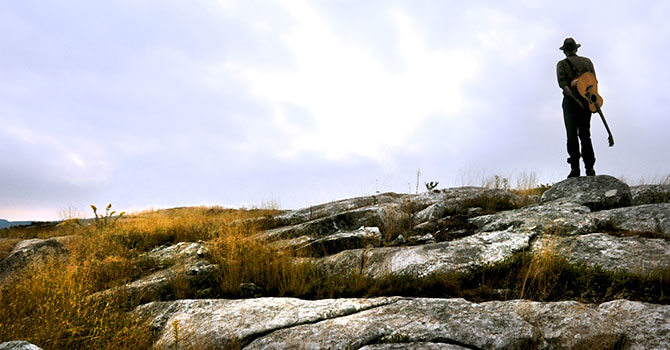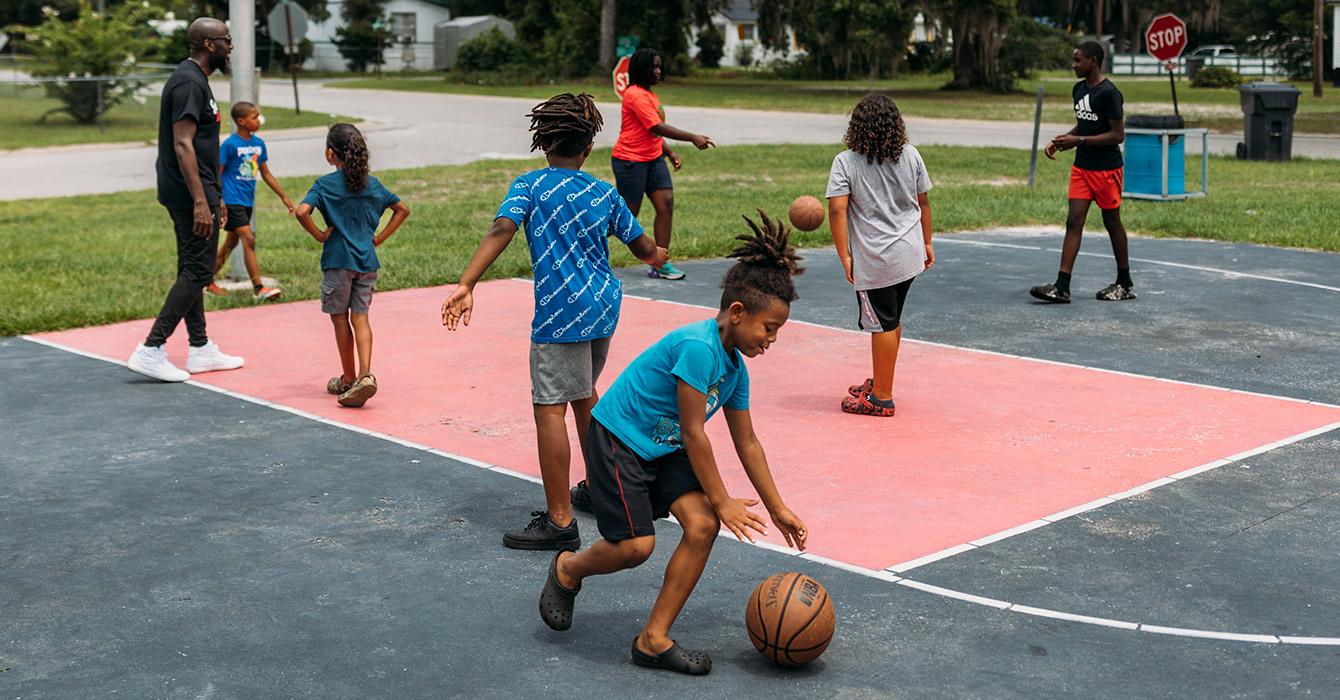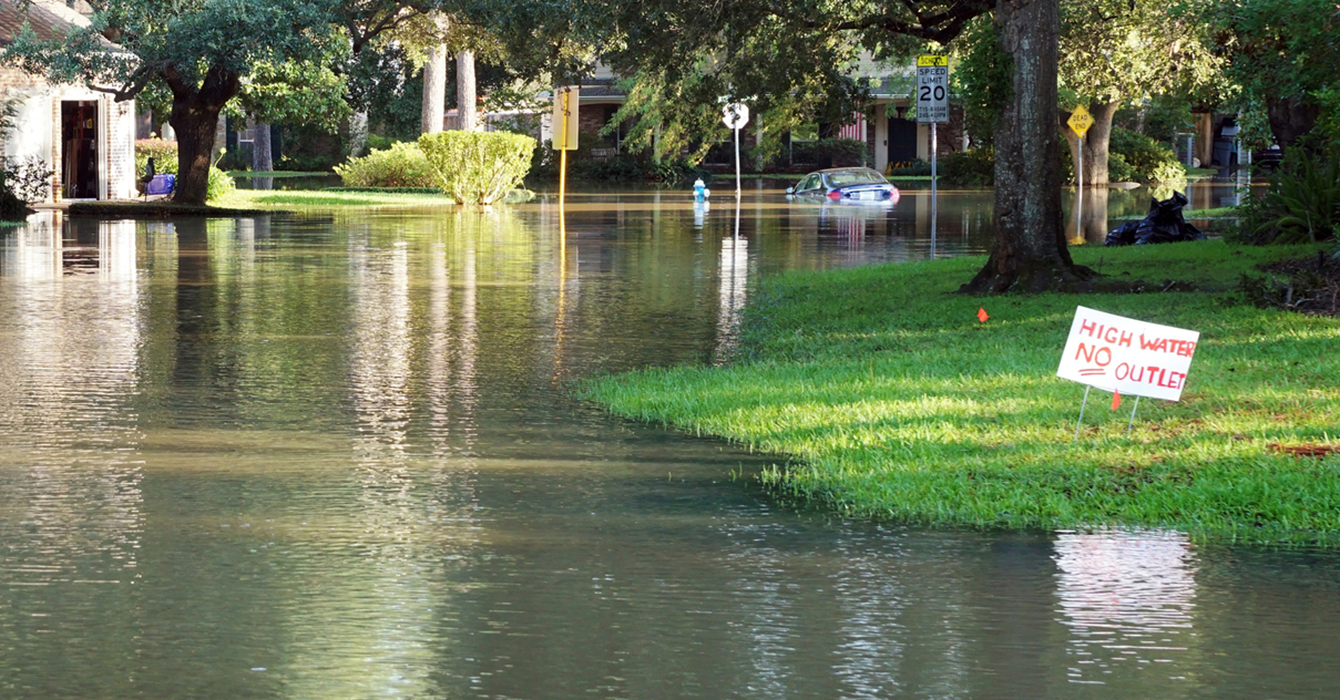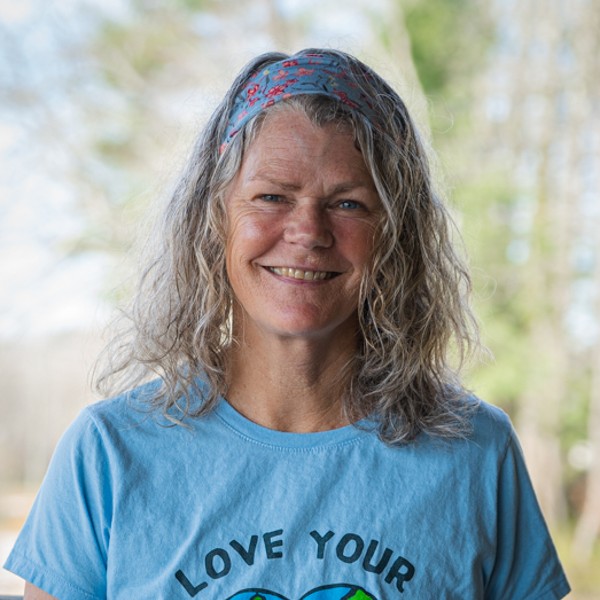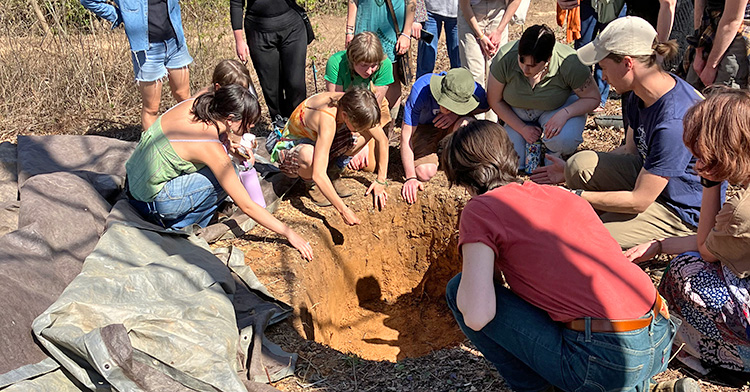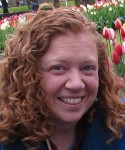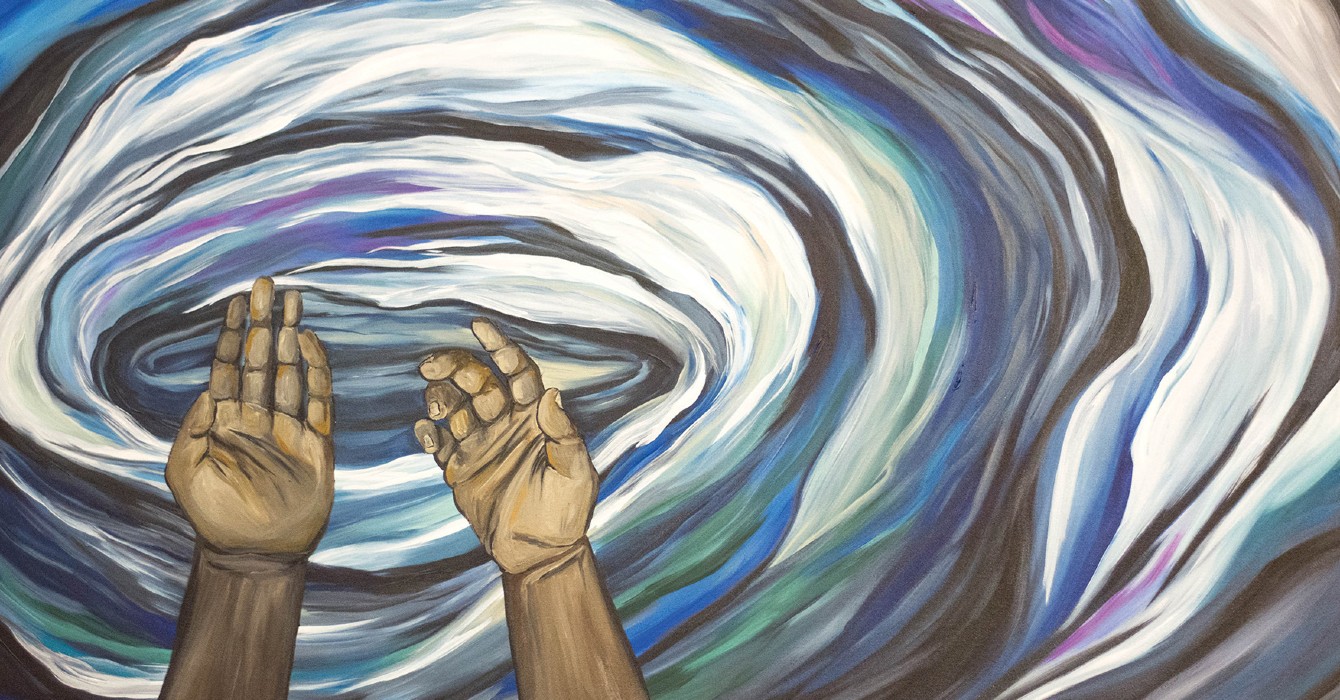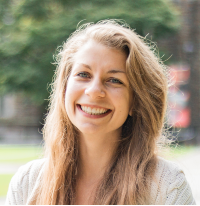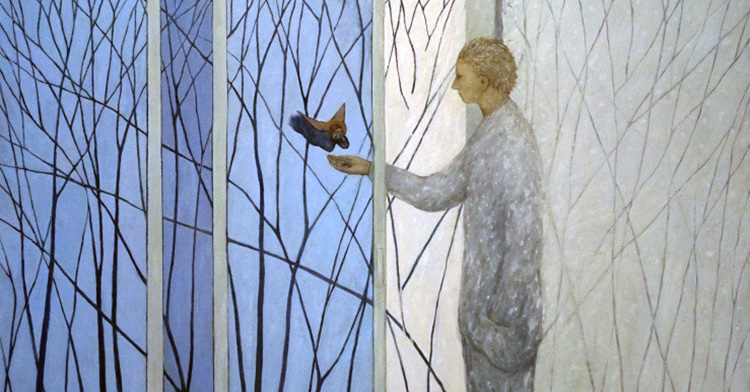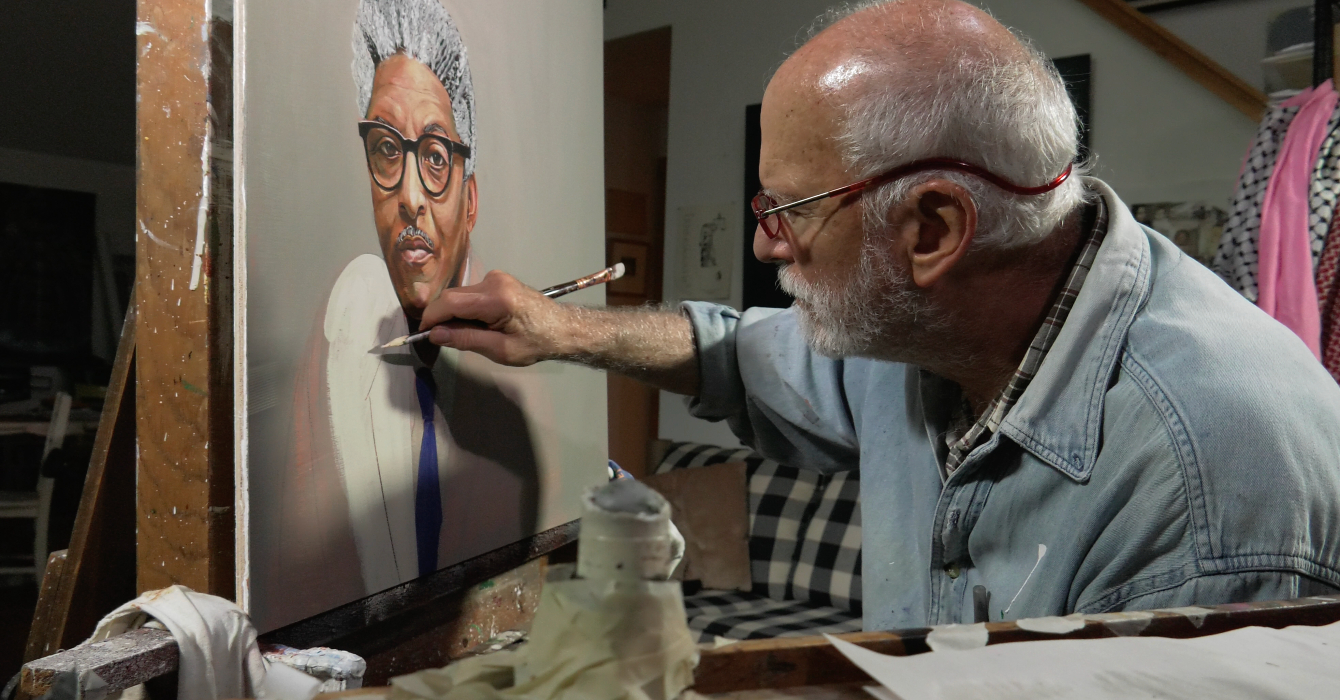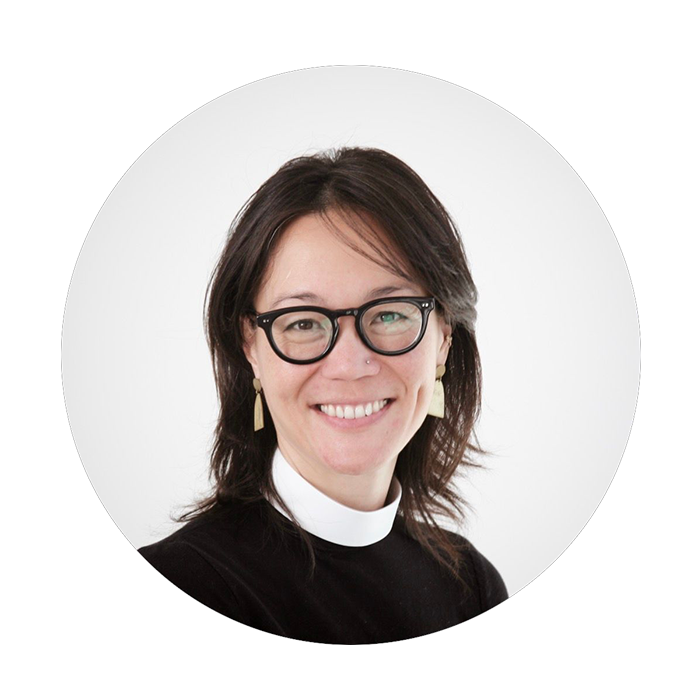David Conover feels a sense of urgency about climate change. But his new documentary is not polemical or political; instead, he hopes that viewers will first behold the earth’s beauty.
“I think it’s the place where we have to revisit first, which is a place of wonder, a place of original engagement with what’s outdoors,” he said. “It’s a necessary, foundational place to start either a conversation or a deepening of commitment to act in a more solutions-oriented way.”
“Behold the Earth” combines musical performances, gorgeous nature footage and interviews with Christians and scientists (many are both). It includes well-known names such as naturalist E.O. Wilson and musicians Tim Eriksen and Rhiannon Giddens, as well as young creation care advocates Ben Lowe and Corina Newsome.
The film and a discussion guide are available for screenings in churches, schools and community gatherings.
Conover has a degree in comparative religious studies from Bowdoin College and was brought up in a Congregationalist church, but he describes his beliefs as secular humanist. He also earned a master’s degree in education at Harvard University. His production company, Compass Light, has produced science and history programs, including the nature documentary television series “Sunrise Earth.”
He spoke to Faith & Leadership about why he made “Behold the Earth,” and his hopes for it. The following is an edited transcript.
Q: While the documentary has voices from both scientists and Christians, the film website notes that you’re neither a scientist nor a Christian. What prompted you to make it?
It was the experience of becoming a parent. My wife and I have two children, a daughter and a son, and when they got to be somewhere around 10 and 8 years of age and were having experiences outdoors -- we live in Maine -- they had questions and concerns about the larger world that they were becoming a part of. It just got to be more and more important for me.
It was a realization of what we’re struggling with in terms of our connection to and our stewardship of nature, of the creation, and becoming aware of realities that weren’t so apparent when I was 8 and 10 years old.
I just had this pent-up feeling that we’re at a point in history where, as Americans, we really need to reset our responsibility to be stewards. I think that required a really deep look at our most deeply held values.
I looked in my reading at our oldest stories, our oldest musics, our oldest parables, which included those in the Bible. I felt it was important to re-examine the relevancy of those words, particularly those words that called for stewardship, and I think that’s very true for Christians. But I think it’s also true for those of us of other faiths, or even for agnostics or atheists.
I think there are a lot of common urgencies that affect us all, but I think at the core, for me, it was really becoming a parent and seeing our children get older.
Q: The film does very specifically make a Christian argument for doing something about climate change in particular and the environment more broadly. Why did you choose to speak to that audience?
I looked for people who were leaders both in the scientific world and in the Christian world, because I think that set of experiences really seemed to have a lot of the ingredients for what’s required to look at these challenges.
They’re very curious folks. They understand the scientific method and have a grounding in how things work in nature, in the creation. And they also have this very strong moral grounding. I found people like Calvin DeWitt, who was one of the architects of the creation care movement, and then other, younger leaders like Ben Lowe.
The film does articulate a Christian vision for reconnecting to the creation and for understanding how the creation points to the Creator, but really, that language was the language of the people that I was talking with. I was listening and trying to understand what they were telling me. I would say I think the film ended up that way because of the people in the film.
Q: The film is very beautiful -- very gentle, slow-moving, with a lot of music. You talk about a sense of urgency, but the film doesn’t really emotionally feel urgent. I was curious about how you made that choice as a filmmaker, since you are trying to be persuasive.
I think it’s the place where we have to revisit first, which is a place of wonder, a place of original engagement with what’s outdoors. At the time I started this film, which was a while ago, I saw my children’s engagement, just walking through the woods or walking along the beach. I feel like that’s just such a necessary engagement, a necessary feeling and understanding of a particular place.
I was reading at the time Richard Louv, who wrote “Last Child in the Woods.” He said that in the life of every person who is an environmental activist or who cares for creation, there is a place in their childhood that gave them that feeling of being grounded.
It’s kind of difficult to describe it, but something helped them discover their connection to the world larger than themselves. A lot of people can find common ground in that area, in that experience, and it’s a necessary, foundational place to start either a conversation or a deepening of commitment to act in a more solutions-oriented way.
That’s a little further down the road, but I don’t think it’s the place where you start. There have been a lot of films done that way, and I think they have a place, but I just wanted to try this in a different way.
Q: Having said that, one of the amusing moments is the zoologist who, growing up in Philadelphia, learned to love nature after finding slugs.
That was Corina Newsome. She grew up in inner-city Philadelphia and had no real connection to life outside of what was on her streets, but she discovered these slugs on the brick wall of her building. That’s all it took. It doesn’t have to be a deep woods or wilderness.
Q: I should explain, since folks who read this interview probably won’t have seen the movie yet, that there’s far more gorgeous footage of nature than slug-related material.
We did go to some great places. We talked with Ben Lowe, founder of a group called Young Evangelicals for Climate Action. His particular place as a child was the waters of the St. Lucie River in Florida -- those waters and the fish in those waters.
For Katharine Hayhoe, who grew up in Canada, it was the night sky in Alberta -- looking up at the stars with her father, who was an environmental science educator.
For E.O. Wilson, the biologist, he grew up in Alabama, but he remembers walking in Rock Creek Park in D.C. and looking at little creatures, too. It was butterflies, and for him, it eventually became ants.
So yeah, just a range of landscapes and places that we visited with this project. There were some incredible places.
Q: How do you hope the film is used? How do you want to reach your audience with it?
The initial release has been through schools and through churches. The idea has been -- and I think it’s proven itself to be a good one -- for people as a group to watch it. It’s really important in that group to have people of all different ages. It gives an opportunity for millennials to speak with elders and sort out some of the questions. In some cases, they share sensibilities, but in some cases, they have just very different experiences.
To give one example of that, Ben Lowe talks about how his generation -- he’s about 30 -- really has a much stronger sense of the environment, of the creation, and the ways that it’s being negatively impacted by people. He feels that that’s much more of an issue for millennials than it is for elders. In his church growing up, he never heard a sermon on the importance of caring for creation, throughout his childhood.
It wasn’t until he got to Wheaton College and then later that he started to see how that really did fit into his mission and he started to make more sense of it. What was of concern for him was that he feels that unless church communities do address this stronger sense for the environment that millennials have, they’ll find that the church won’t be as relevant to their life. That’s been a big motivator for him. I think that’s also true for Corina Newsome, [who now works at the Nashville Zoo] in Tennessee.
Q: So it’s not about the church persuading young people that stewardship of the environment is important. It’s that young folks are already engaged with the environment and are looking to see whether the church is going to also take action.
That’s really important, and if they don’t find that, they may leave the church. From what Ben and Corina told me, that was something that they felt was really important for their communities to flourish.
Q: Another important aspect of the film is the music. It’s more than just a soundtrack; there are performers you see throughout the film. Why?
We had some great musicians, Grammy Award-winning musicians, in the film: Dirk Powell, Rhiannon Giddens and Tim Eriksen.
Here in the Northeast, there’s a heritage from the 1840s right through to the end of the century, a heritage of singing outdoors, and this was part of the revival movements of the time. These singing events would attract hundreds, even thousands, of people together in an open meadow, say in Hope, Maine, which is a neighboring town. People would sing songs of praise, and they would sing all day, into the night.
There was a collection of these tunes called “The American Vocalist.” Tim had introduced me to them, so many of the songs in the film come from that book, and then we adapted them somewhat for banjo, guitar and fiddle.
I think the overall structural, cinematic purpose of the music was to just provide time for people to consider how what they’re hearing from the people that I talk with fits in on a different level, in a way that music is very good at evoking.
The specific songs are tied to what the larger idea of the film is and this word “behold,” which was a word that really grabbed me and eventually became the title of the film -- “Behold the Earth.”
Q: The film makes a connection between this word “behold” in a religious sense and in the realm of science. Talk a little bit about that thread.
It wasn’t a word that I even had thought much about. It sounded like a kind of old word, an Old World word, and then it was really Cal DeWitt who pointed out the word and its value and its meaning to him.
He said it’s very different from taking a look at something. “Beholding” is something that you do when you have a lot of time, and it’s something that you practice with great intent, looking very, very closely at something. As part of that looking, you’re also opening yourself up to all that you could learn from what you’re looking at.
He says, “Later, this way of looking can be structured in a highly disciplined way.” And as a scientist, that’s what he did. But he also talks about how that way of looking was very much a part of his faith.
He’s looking at a particular type of flower, and he says, “You can look at this and see it as praising God.” I thought, “Huh, that’s a really interesting way to look at a flower.”
It was the word “behold” that he felt best described that, and he is the one who clued me into that.
Q: As I mentioned earlier, you don’t have really a call to action in the film. But for folks in Christian leadership who feel inspired by the film and want to do something about climate change, what should they do?
There is a study guide that we’ve been using that a lot of the folks in the film helped us put together. But I think our approach is that each congregation, each group, has within them the resources to sort out how they want to act on this discussion.
Our main intent is to help catalyze that discussion and then those actions. How are they most appropriate for that community? Ben Lowe, I think, put it really nicely.
He said, “You can act virtuously to care for creation, but if you don’t have the skills of knowing how to do that, there are limits to how far your virtue can go.” He actually is now back in graduate school learning to become a fishery biologist to help him with those skills and understanding how to work in an area that’s very important to him.
I think the key thing is to get beyond the general to the very specific things that are local in your community. That’s where we hope the film will go with its action.

